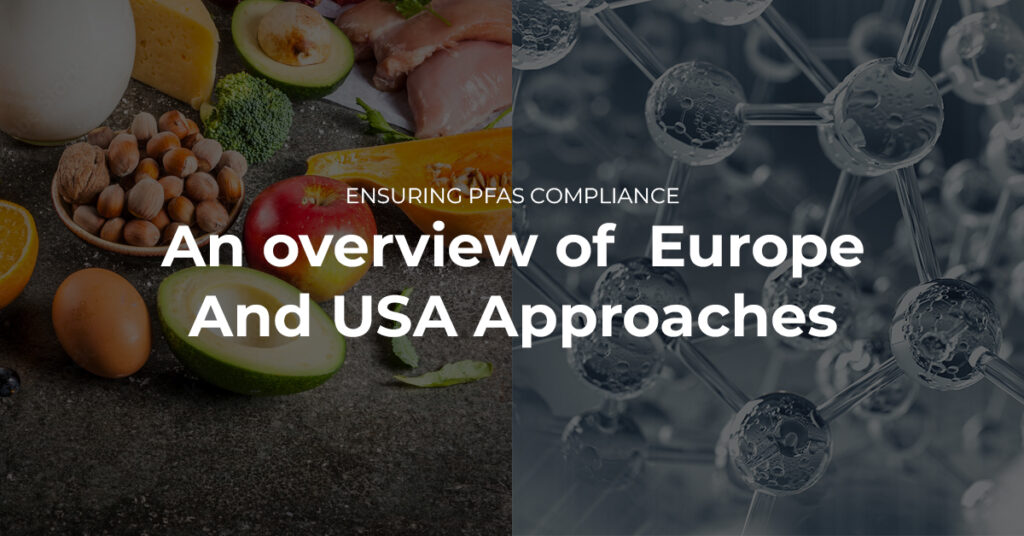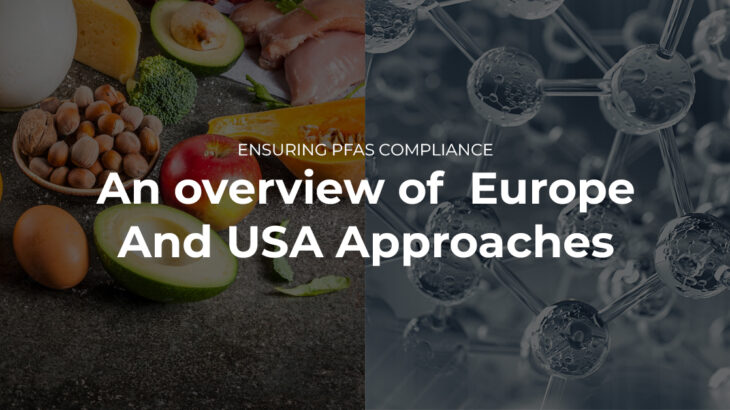
Introduction:
Per and polyfluoroalkyl substances (PFAS) are a class of synthetic chemicals that are utilized in several sectors and goods, numbering in the thousands. Despite the hazards to human health, practical uses, and environmental issues, PFAS.
As a conscientious and progressive company, SunStream Global Technologies is aware of the worldwide apprehensions pertaining to per- and polyfluoroalkyl substances (PFAS).
This article highlights our creative solutions and illuminates our dedication to PFAS compliance while negotiating legal frameworks in the US and Europe.
Understanding PFAS and its impacts:
Both hydrocarbon and fluorocarbon segments make up PFAS molecules; the non-fluorinated portion can break down to produce per-fluorinated PFAS acids, including PFOA and PFOS. These particular PFAS compounds are extremely resistant to environmental deterioration. Exposure by food, dust, or drinking water could result from this. Human health may be harmed by prolonged exposure to some PFAS.
Short-chain PFAS accumulate in the environment, but long-chain PFAS accumulate in people, animals, and sediment/soil.
Different products include clothing, furniture, adhesives, food packaging, firefighting foam, heat-resistant non-stick cooking surfaces, and electrical wire insulation that contains per- and polyfluoroalkyl substances (PFAS).
Startling research indicates that 97% of Americans have PFAS in their blood, highlighting the widespread exposure.
There is worry over several PFAS:
- The environment does not decompose these PFAS compounds.
- It can spread quickly through soils and contaminate sources of drinking water.
- It causes immunological problems that may be linked to cancer, thus regulatory intervention is necessary. build up in fish and other species, or bioaccumulate.
Environmental stewardship initiatives:
The EPA and others require data on the impact of technologies and methods intended to remove, treat, and manage PFAS and PFAS-containing products from the environment in order to reduce the amount of PFAS present in our environment. Decisions regarding the treatment of drinking water and wastewater, the cleanup and remediation of polluted sites, air emission controls, and the management of end-of-life materials must be updated with this knowledge. Additionally, this data is required to make sure that remediation strategies do not result in new exposures to per- and poly-fluoroalkyl substances (PFAS), especially in overburdened areas that frequently house treatment and waste management facilities.
PFAS compliance with European regulations:
The European Chemicals Agency’s (ECHA) definition of PFAS suggests the substance’s determination and the goal of lowering emissions into the environment. The plan differs from U.S. standards in that it requires precise industry or product categorizations.
With years of authorization behind it, the EU’s current PFAS rule places restrictions on PFOS and PFOA. Similarly, an interesting step has been taken with the combination of PFHXS and the Stockholm Convention. Certain PFAS compounds are designated as substances of very high concern (SVHC) by the REACH legislation. The EU’s obligation to take precautionary measures is emphasized by the proposal for the use of PFAS in firefighting foams. While PFOA and PFOS are superiority harmful compounds that are part of the Water Framework, other PFAS are on the Community Rolling Action Plan for ranking during the next years instructive. PFAS have been found in air, soil, biota, and plants. They are ubiquitous in the aquatic environment and in species outside of Europe. This includes a map showing all the factories in Belgium, Italy, and the Netherlands that have contaminated drinking water, as well as all the airports and military installations in Germany, Sweden, and Scotland. It is estimated that there are over 100,000 sites across Europe that could potentially leak PFAS.
According to the theory of safe-and-circular-by-design, product life cycles must be made safer from the beginning in order to achieve the goal of zero pollution. This procedure promotes innovation for safer chemicals while providing chances to protect the environment and public health of Europe.
Adhering to US regulatory standards:
PFAS regulation is growing in the United States, both at the federal and state levels. Prominent initiatives have raised awareness and prompted governments like Minnesota to enact comprehensive legislation banning the use of PFAS. The EPA has suggested rules, ranging from continuous state-level initiatives, to contractual limitations on drinking water. The majority of the sites that described PFAS were in the hazardous waste management or chemical manufacturing sectors.
Over the past 20 years, a growing number of increasingly stringent state and federal drinking-water requirements have been permitted, which has resulted in a rapid change in PFAS laws in the US. For drinking water, about 40 million Americans rely on private wells; for more than one-third of the US population, there is no designated data on PFAS exposure and any health impacts. Small public and private wells can be disproportionally issued by PFAS, as was first identified.
The production and usage of PFOS and PFOA in the US have been denied since 2002. A decrease in blood PFAS ranks has coincided with the denial of the use of some PFAS. Studies on biomonitoring have quantified PFAS levels in various populations, such as laborers in PFAS production sites and localities with tainted drinking water. PFAS are present in the blood of the majority of Americans. Low blood levels of other contaminants, such as plasticizers and flame retardants, are equivalent to PFAS levels. Still, not enough research has been done to say at what PFAS levels health problems might be expected. whereas state-led initiatives have an impact on U.S. regulations. As the need for alternatives increases and compliance’s viability shifts, industries are struggling.
Conclusion:
In conclusion, there is a shared commitment to tackling the health and environmental risks associated with per and polyfluoroalkyl substances (PFAS) in both Europe and the US in the way these persistent chemicals are managed. Although regulatory regimes may vary, the preservation of public health and ecosystems is still the major objective.
Future developments in technology, public awareness campaigns, and continuing study will determine how PFAS management develops. Being a leading compliance services provider, SunStream Global Technologies‘ commitment to PFAS compliance and the proactive measures it has done to go above and beyond regulatory requirements is a natural extension of the solution it provides in other regulations like RoHS Compliance, REACH Compliance and Prop65 Compliance. A partnership with Suntream’s compliance group will assure your dedication to ethical, cutting-edge methods in product creation and putting ethical principles into action to lessen the impact of PFAS on our world and its inhabitants.




 +1.585.935.7123
+1.585.935.7123 +91-804-148-6861
+91-804-148-6861